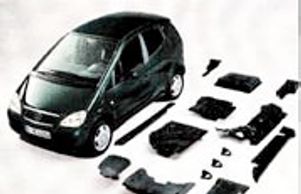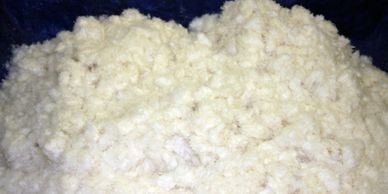Carbonized Featherfiber®- Nature's Nanotube
High-Impact Material

The development of bio-based advanced materials from renewable resources, such as carbonized feather fibers, is quite attractive from both economic and environmental perspectives, and is an important aspect for the longevity of the composites industry. Featherfiber pyrolyzes the feathers into high performance carbon fibers of considerable value.
Ecological Advancement

Waste poultry feathers are an environmental problem worldwide. In the United States alone, billions of pounds of feathers are produced annually in the nation’s poultry processing plants as a by-product of poultry production. Disposal of the feather waste is expensive and difficult.
We eliminate the feather disposal problem and generate an economically valuable new bio-based product.
Real Good Results
Real Good Results
By using bio-based components to formulate new materials, the likelihood of biodegradability increases. Most importantly, it significantly reduces agricultural waste by reusing it as a valuable feedstock for advanced high performance materials.
What is Featherfiber?

Feather fibers are composed of the protein keratin, which exists in two microcrystalline forms in the fiber and the quill. Keratin feather fibers are hollow, light materials, having an aspect ratio of about 1000 with a typical diameter of 5-6 mm and length of 3-20mm. It has been shown that the low density (SG ~ 0.80) chicken feather fibers (CFF) also have an unusually low dielectric constant (k ~1.7) suited to electronic materials and the fibers are tough enough to withstand both mechanical and thermal stress for composite materials.
However, the as-delivered chicken fibers are not as stiff as fiberglass, carbon or even most natural lingo-cellulosic fibers. We make significant improvements in properties by making low-cost carbon fibers from the chicken feathers and demonstrating that they can be used as advanced bio-based composite materials in a large number of high volume applications from housing, automotive and sports goods to electronic materials.
Fibers for high performance composites are one of the most important advanced engineering materials produced today. One possible solution for the production of high modulus bio-fibers may reside in the process of carbonization. Specifically, the keratin fiber from feathers provides an intriguing candidate for carbonization. The overall hollow structure and integrity can be maintained while the mass is reduced, providing a significant advantage gained in the strength-to-weight ratio.
During carbonization, the material is exposed to high temperatures under an inert atmosphere for long periods of time to remove the non-carbon-carbon bonds. Significantly enhanced properties, such as good mechanical and thermal properties and high electrical conductivities, have evolved out of carbonized materials. These possibilities earmark the specific goals for investigating carbonization of the keratin feather fibers and their use with soy-based composites.
Copyright © 2025 Featherfiber - All Rights Reserved.
